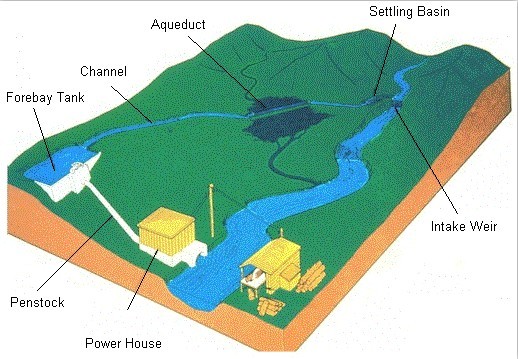How does it work?
Water from the river is channelled through a settling basin, which helps to remove sediment that could harm the turbine. The water then flows into the Forebay Tank where it is directed downhill through a pipe called a penstock. When the water reaches the bottom, it drives a specially designed turbine to produce the electricity.

micro-hydro-power-diagram-hydroturbines-basics
Why is it needed?
Of course, every community’s particular needs are different. But in general, access to energy is a vital stage in the development of remote villages like these.
It can lead to swift and significant improvements in education, sanitation, healthcare and the overall standard of living. These benefits are achieved both directly – as in the provision of light – and indirectly – as the time and money that people save is redirected into other projects.
How long will it last?
Micro-hydro systems like these are designed to operate for a minimum of twenty years if they are properly looked after. That’s why we train local people to build and maintain their own system. And by making a small charge for use, communities can accumulate enough money to pay for the replacement of the unit at the end of its useful life.
Once schemes are set up, they should continue to function indefinitely without any more external funding.
What’s the environmental impact?
Unlike traditional power stations that use fossil fuels, micro-hydro generators have practically no effect on the environment. And because they don’t depend on dams to store and direct water, they’re also better for the environment than large-scale hydro-electric stations.
In fact, by reducing the need to cut down trees for firewood and increasing farming efficiency, micro-hydro has a positive effect on the local environment.
What does it cost?
Costs are different for every case, and it is impossible to give an accurate figure without knowing the specifics of the site. From our experience, the cost varies from approximately £1,200 to £4,000 per installed kW, when using appropriate technologies, which are much cheaper than using conventional approaches and technolgies.
——————————————————————————–
Further understanding
This page only gives the basic outline of how micro-hydro power can make a difference. Micro-hydro-power.com has produced a number of more in-depth installatin projectss for further understanding on micro-hydro power:



